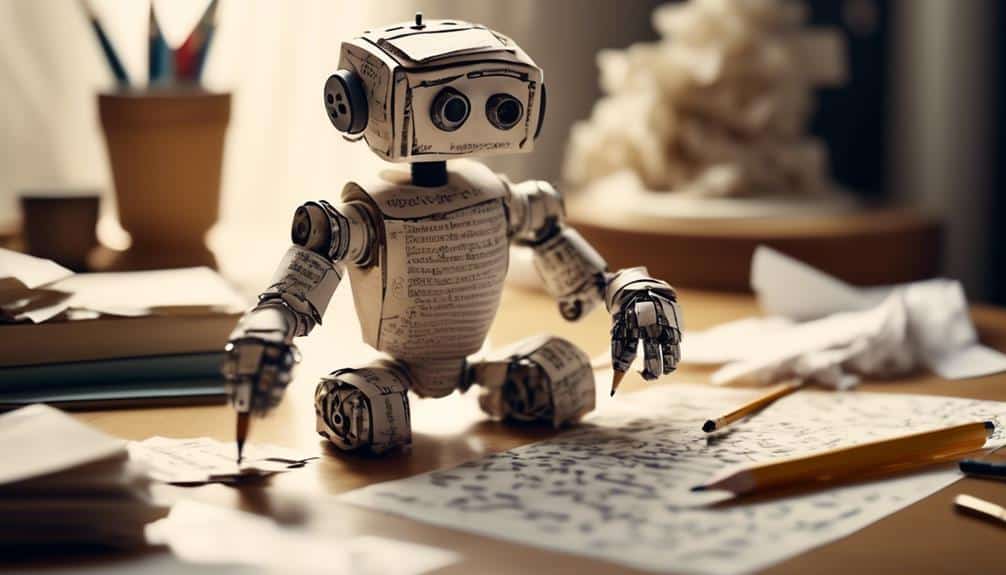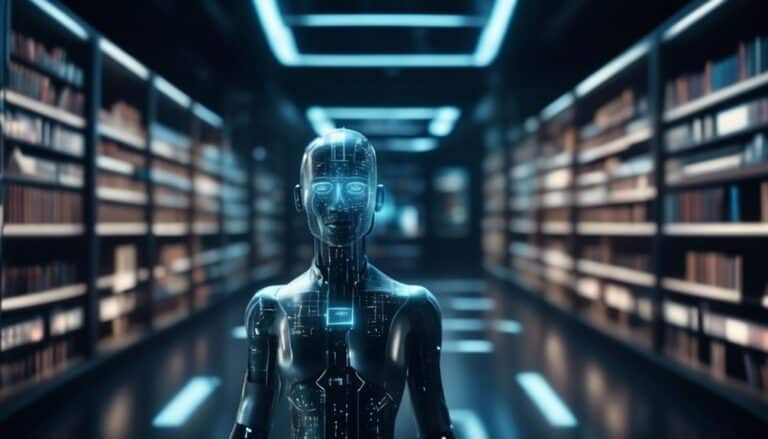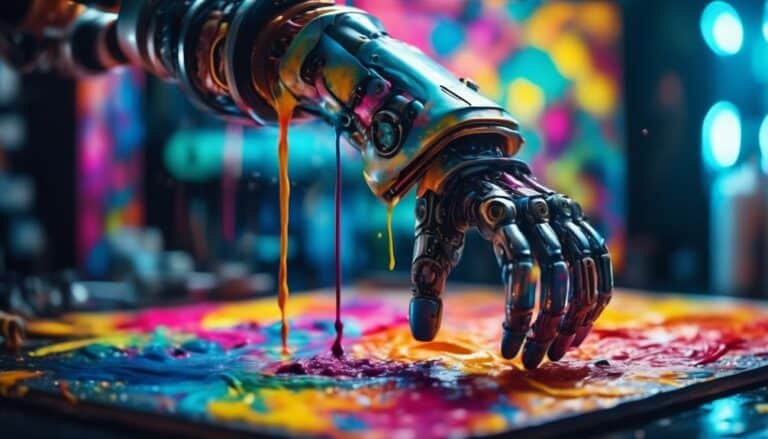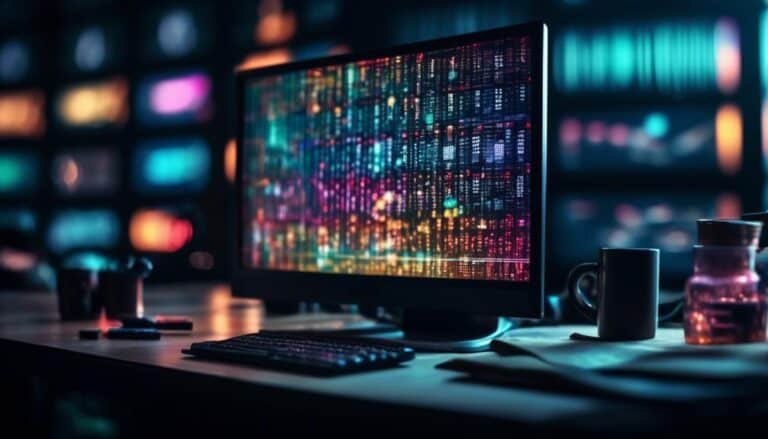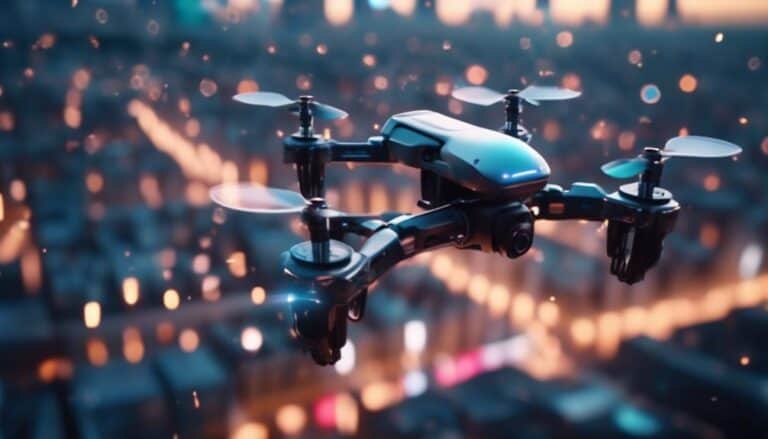AI and Originality: Tackling the Challenges of Plagiarism in Machine-Written Texts
When it comes to the realm of AI-generated content, did you know that the rise of machine-written texts has brought forth a new set of challenges surrounding originality and plagiarism?
As technology advances, the lines between human-generated and AI-generated content continue to blur, raising concerns about the authenticity and uniqueness of the text produced.
In navigating this complex landscape, it becomes crucial to address the issue of plagiarism in machine-written texts with a thoughtful and strategic approach.
Key Takeaways
- AI advancements intensify challenges in ensuring originality in machine-written texts.
- Detecting plagiarism in AI-generated texts requires sophisticated tools utilizing advanced algorithms.
- Ethical considerations are crucial in the responsible development of AI writing technologies.
- Strategies such as varied sentence structures and cross-referencing content databases help uphold originality in AI texts.
The Rise of AI in Content Creation
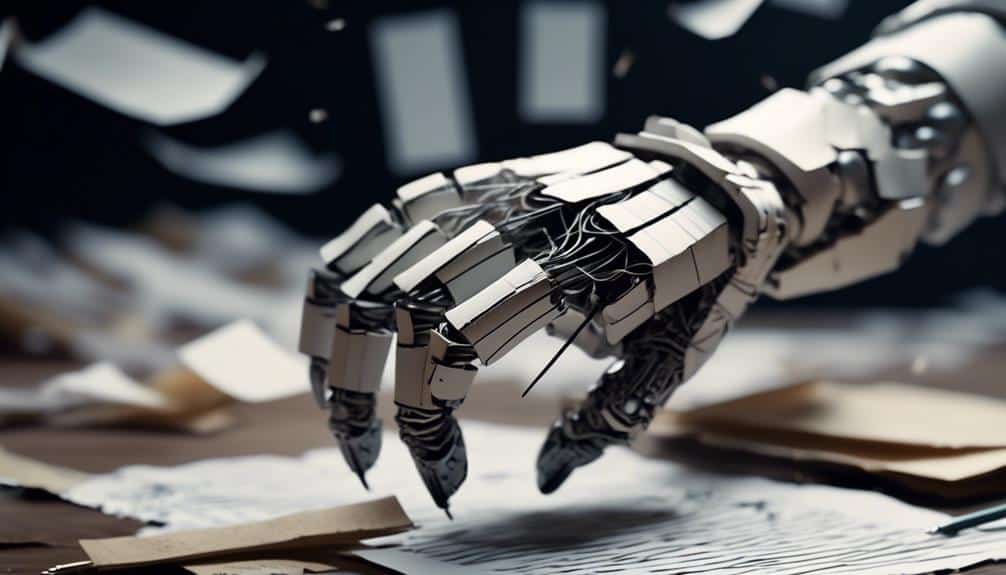
AI technology has revolutionized the landscape of content creation, enabling a new era of efficiency and innovation in generating written texts. The advent of AI content creation has brought about a paradigm shift in how information is produced and disseminated. Machine-generated texts are becoming increasingly prevalent across various industries, from journalism to marketing, due to their ability to quickly generate vast amounts of content with minimal human intervention. This advancement hasn't only streamlined the content creation process but has also opened up new possibilities for creativity and scalability.
AI content creation tools leverage natural language processing algorithms to interpret data, generate coherent sentences, and produce high-quality written material. The use of machine-generated texts has the potential to revolutionize how organizations approach content creation, allowing for faster turnaround times and increased productivity. However, as AI continues to evolve, questions regarding the authenticity and originality of machine-generated content have surfaced, necessitating a deeper examination of the ethical implications surrounding AI-generated texts.
Understanding Plagiarism in AI Texts
With the proliferation of machine-generated content in various industries, the issue of plagiarism in AI texts has become a focal point for ethical scrutiny and debate. As AI continues to advance and create text at unprecedented speeds, the challenges of ensuring originality and preventing plagiarism have intensified. AI text detection tools play a crucial role in identifying instances of plagiarism in machine-written texts. These tools employ sophisticated algorithms to compare the content generated by AI with existing sources to check for similarities and potential cases of plagiarism. By utilizing AI text detection, content creators and organizations can take proactive measures to uphold ethical standards and protect intellectual property rights.
In the realm of plagiarism prevention, understanding the nuances of how AI generates content is essential. While AI can assist in creating vast amounts of text efficiently, there's a risk of inadvertently replicating existing content. Hence, implementing robust plagiarism prevention strategies, including regular checks using AI text detection tools and fostering a culture of originality, is paramount in maintaining integrity in machine-written texts.
Tools for Detecting AI-Generated Plagiarism
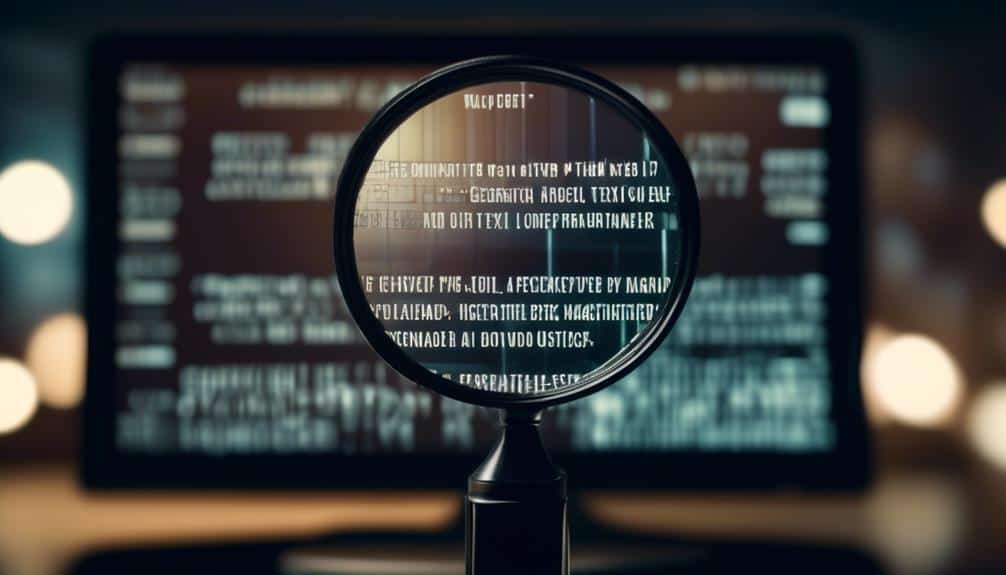
Utilizing advanced algorithms and sophisticated techniques, detecting AI-generated plagiarism has become a critical aspect of maintaining integrity in machine-written texts. Plagiarism detection tools are essential in identifying content that has been copied or paraphrased without proper attribution. AI algorithms play a crucial role in developing these tools, constantly evolving to keep up with the ever-changing landscape of machine-generated texts.
Machine learning is at the forefront of plagiarism prevention, with algorithms trained to recognize patterns indicative of plagiarism in AI-generated content. These algorithms compare texts against vast databases to flag similarities that may indicate unauthorized copying. By analyzing not just the words but also the structure and context of the text, these tools can detect even subtle instances of plagiarism that may go unnoticed by human eyes.
In the ongoing battle against AI-generated plagiarism, the development of more sophisticated tools powered by AI algorithms is imperative. As technology advances, so too must our methods of detecting and preventing plagiarism in machine-written texts to uphold the integrity of original content.
Ethical Considerations in AI Writing
When considering Ethical Considerations in AI Writing, it's crucial to reflect on AI Ethics in Writing, Moral AI Dilemmas, and Ethical AI Decision-Making.
These points raise important questions about the responsibilities and implications of AI technology in the realm of content creation.
Exploring these aspects can lead to a deeper understanding of the ethical challenges that arise with the increasing use of AI in writing.
AI Ethics in Writing
Ethical considerations play a crucial role in the realm of AI writing, guiding the responsible development and implementation of automated content generation technologies. When delving into AI ethics in writing, it's essential to analyze various aspects that influence the ethical landscape within this domain:
- Data Privacy: Ensuring the protection of user data and preventing unauthorized access.
- Algorithm Transparency: Requiring clear disclosure of AI involvement in content creation to maintain writing integrity.
- Bias Mitigation: Addressing and minimizing biases that AI systems may inadvertently perpetuate in written content.
- Accountability: Establishing mechanisms to attribute responsibility in cases of ethical breaches or errors in AI-generated texts.
Considering these factors is paramount for fostering trust in AI writing systems and upholding ethical standards in content creation.
Moral AI Dilemmas
Navigating the realm of AI writing ethics entails confronting moral AI dilemmas that pose significant challenges in automated content generation technologies. When considering AI ethics, the issue of moral dilemmas arises due to the potential for AI systems to produce content that may not align with ethical standards.
In the context of automated writing, these dilemmas manifest in questions surrounding the responsibility for the content created by AI, the impact on authenticity and originality, and the potential for misuse or manipulation. Addressing these moral dilemmas requires careful consideration of the implications of AI-generated content on society, creativity, and trust.
Ethical AI Decision-Making
Exploring ethical decision-making in AI writing involves carefully considering the implications of automated content generation on societal values and integrity. When delving into the realm of ethics in algorithms and responsible AI deployment, several key considerations arise:
- Transparency: Ensuring transparency in AI algorithms is crucial for understanding how decisions are made.
- Accountability: Establishing clear lines of accountability is essential when AI systems are involved in content creation.
- Bias Mitigation: Addressing and mitigating biases in AI algorithms is necessary to uphold fairness and equality.
- User Consent: Respecting user consent and privacy rights is paramount in the deployment of AI technologies for content generation.
Strategies for Ensuring Originality in AI Texts
To ensure originality in AI texts, incorporating varied sentence structures and vocabulary choices can help mitigate the risk of unintentional plagiarism. By promoting creativity through diverse linguistic patterns and word selections, AI systems can generate content that's distinct and unique. When AI models are programmed to utilize a wide range of sentence formats and vocabulary options, they're less likely to produce text that closely resembles existing sources, thus reducing the chances of unintentional plagiarism.
Moreover, implementing algorithms that cross-reference newly generated content with extensive databases can aid in plagiarism prevention. These algorithms can quickly identify similarities between the AI-generated text and existing works, flagging potential instances of replicated content for further review. By adopting such strategies, AI developers and users can uphold ethical standards in content creation and dissemination, fostering a culture of originality and integrity in machine-written texts.
Balancing Automation and Originality
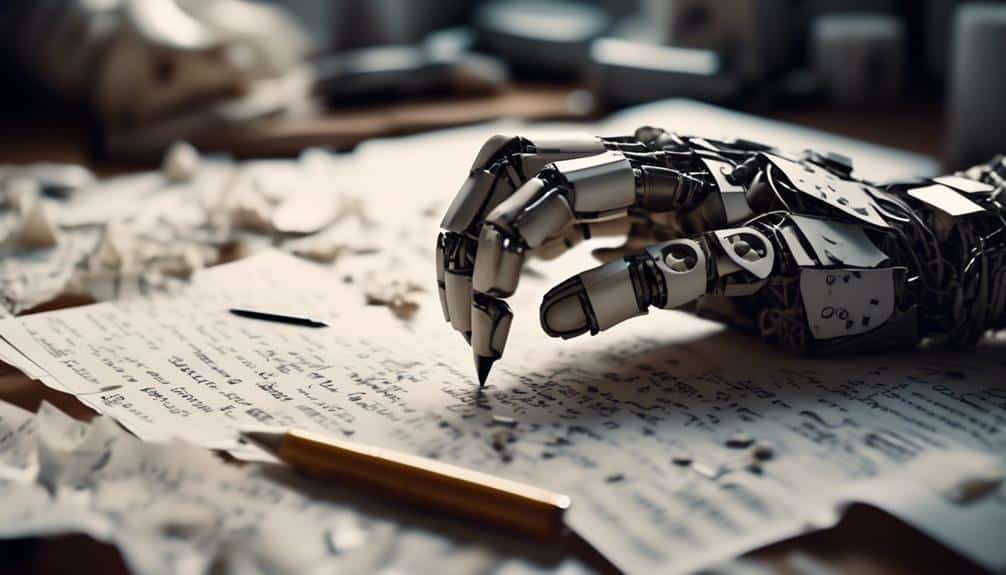
Balancing automation with originality in AI-generated texts requires a nuanced approach that prioritizes both efficiency and creativity. When navigating the complexities of automation challenges and creativity balance, it's crucial to find a harmonious middle ground.
Here's how you can achieve this:
- Implement Diverse Training Data: Ensure that the AI model is exposed to a wide range of sources to foster originality and prevent regurgitation of existing content.
- Fine-Tune Algorithm Parameters: Adjust the settings of the AI system to encourage the generation of novel ideas while maintaining coherence and relevance.
- Human Oversight and Editing: Incorporate human intervention to review and refine the AI-generated content, adding a unique human touch that machines may lack.
- Regularly Update Algorithms: Keep abreast of the latest advancements in AI technology to continuously improve the balance between automation and originality.
Impact of AI on Copyright Laws
The evolution of AI technology has significantly influenced the landscape of copyright laws, prompting a reevaluation of intellectual property rights in the digital age. AI's impact on creativity and legal implications is a complex issue that requires careful consideration. On one hand, AI has the potential to enhance creativity by assisting creators in generating new and innovative content. However, this also raises concerns about the originality of AI-generated works and the extent to which they can be protected under current copyright laws.
| Pros | Cons |
|---|---|
| AI can aid in creative processes, leading to new and unique content | Lack of clarity in copyright ownership for AI-generated works |
| Streamlining content creation processes | Potential increase in plagiarism and infringement cases |
| Facilitating access to tools for creators | Challenges in defining the boundaries of copyright protection for AI creations |
| Encouraging experimentation and new forms of expression | Need for updated copyright legislation to address AI's impact |
| Enhancing collaboration and cross-pollination of ideas | Difficulty in enforcing copyright laws in the digital realm |
As AI continues to advance, policymakers and legal experts must navigate these challenges to ensure a balanced and fair copyright framework that fosters innovation while protecting the rights of creators.
Future Trends in AI-Generated Content
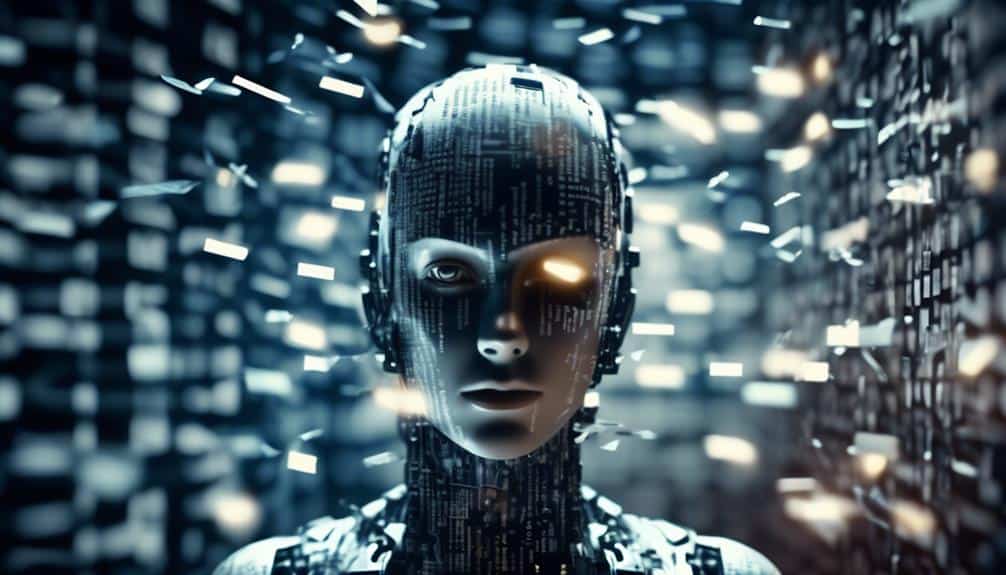
Recent advancements in AI technology are paving the way for unprecedented shifts in the landscape of content creation through the lens of AI-generated works. As we look towards the future of AI-generated content, several trends are emerging:
- Content diversity: AI is increasingly being used to create a wide range of content across various industries, from news articles to marketing materials. This trend is likely to continue as AI systems become more sophisticated in understanding and mimicking human creativity.
- AI creativity: The ability of AI to generate creative and original content is improving rapidly. With advancements in natural language processing and machine learning algorithms, AI systems can now produce content that isn't only coherent but also innovative.
- Personalized content: AI is enabling the creation of personalized content at scale, catering to the individual preferences and needs of users. This trend is reshaping how content is delivered and consumed, leading to more engaging and relevant experiences for audiences.
- Ethical considerations: As AI-generated content becomes more prevalent, ethical concerns regarding transparency, bias, and ownership are gaining prominence. Addressing these issues will be crucial in ensuring the responsible use of AI in content creation.
Frequently Asked Questions
How Does AI Technology Impact the Creative Process in Content Creation?
When using AI in content creation, you may find it impacting your creative process by enhancing efficiency. However, ethical considerations arise regarding originality and the balance between machine-generated content and human creativity. Striking this balance is crucial.
What Are the Potential Legal Implications of Using Ai-Generated Content in a Commercial Setting?
When using AI-generated content in a commercial setting, consider potential legal implications. Ensure compliance with copyright laws to avoid issues. Seek legal advice to navigate the complexities of intellectual property rights and commercial use.
How Does the Use of AI in Content Creation Affect the Concept of Authorship and Ownership?
When using AI in content creation, ethical implications arise regarding authorship attribution and ownership rights. It challenges traditional notions of intellectual property. Understanding the impact on these concepts is crucial in navigating the evolving landscape of content creation.
What Are Some Common Challenges Faced by Authors and Publishers in Detecting Ai-Generated Plagiarism?
In the realm of writing, authors and publishers face challenges with detecting AI-generated plagiarism. Various detection techniques are utilized, such as comparing content against databases and analyzing writing styles to identify potential instances of plagiarism.
How Can Individuals Protect Their Original Work in an Environment Where AI Can Easily Replicate and Modify Content?
To safeguard your original work in a world where content can be easily replicated and altered, utilize AI safeguards and plagiarism prevention tools. Stay vigilant in monitoring for unauthorized use or modifications to protect your creations.
Conclusion
In conclusion, the increasing use of AI in content creation poses unique challenges when it comes to maintaining originality and combating plagiarism. While tools for detecting AI-generated plagiarism are improving, ethical considerations and strategies for ensuring originality are crucial.
Finding the balance between automation and originality is key in navigating the evolving landscape of AI-generated content. As technology continues to advance, it's important to stay vigilant and proactive in addressing these issues to uphold standards of creativity and integrity in the digital age.
